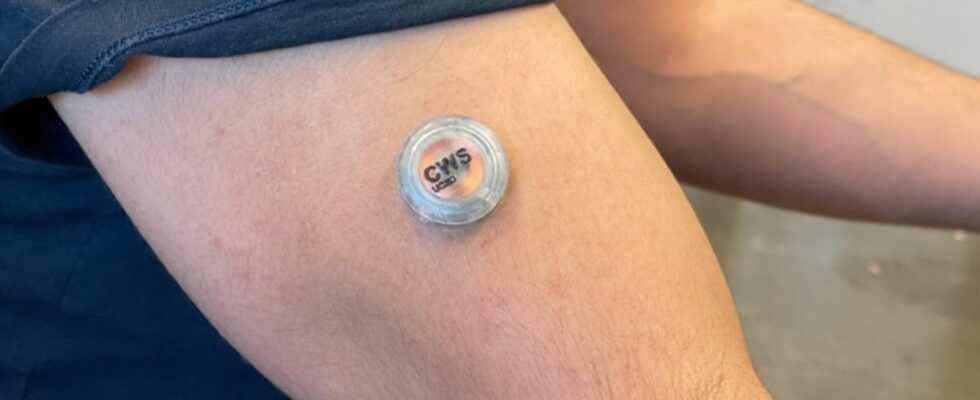Published 4 hours ago,
Reading 2 mins.
Researchers at the University of California at San Diego in the United States have just developed a device the size of a two-euro coin. Once installed on the arm, this wearable sensor is able to measure blood glucose, alcohol and lactate levels.
Published in the journal Nature Biomedical Engineering on May 9, this work unveiled a new device capable of instantly giving an alcohol level, a blood sugar level or a blood lactate level. We immediately imagine the potential possibilities offered by this kind of tool, but be patient because it is not yet available on the market.
A “complete laboratory on the skin”
According to one of the study’s co-authors, Joseph Wang, a biomedical engineer at the University of California, San Diego, “it’s like a complete laboratory on the skin. It is able to continuously measure multiple biomarkers at the same time, allowing users to monitor their health and well-being as they go about their daily activities.”.
Indeed, this type of sensor could help a diabetic person to monitor his blood sugar to regulate his diabetes, an athlete his lactate level to indicate muscle fatigue and tissue damage or a lambda individual his blood alcohol level before taking the flying.
The rechargeable sensor, which contains a battery and other electronic components, measures the size of a coin. It can be installed on the upper arm. It was tested by five volunteers as part of this study. Composed of disposable micro-needles, which stick to the arm via a patch adhering to the sensor, the detector is therefore a tool that is both painless and minimally invasive. Indeed, these needles that compose it are very fine, their diameter being the size of a fifth of a hair.

The operation is as follows: these needles contain sensors which sample the interstitial liquid of the body, once the sensor is installed on the skin. When different enzymes inside the microneedles react with these chemicals, they generate electrical signals. These signals are then analyzed by additional sensors inside the device before being sent to a smartphone app developed by the researchers.
Improved quality of life
For Farshad Tehrani, PhD student at UC San Diego and co-first author of the study: “AWith our sensor, people can see how their glucose spikes or drops interact with their diet, exercise, and alcoholic beverage consumption. It could also improve their quality of life.”.
If the device seems very interesting, it is currently only at the prototype stage. Indeed, it can only work for a few hours at the moment, even though it is rechargeable. The University of California, San Diego team also plans to conduct more extensive clinical trials to test the device on other health-specific chemicals, such as antibiotic levels when treating patients. bacterial infections.
